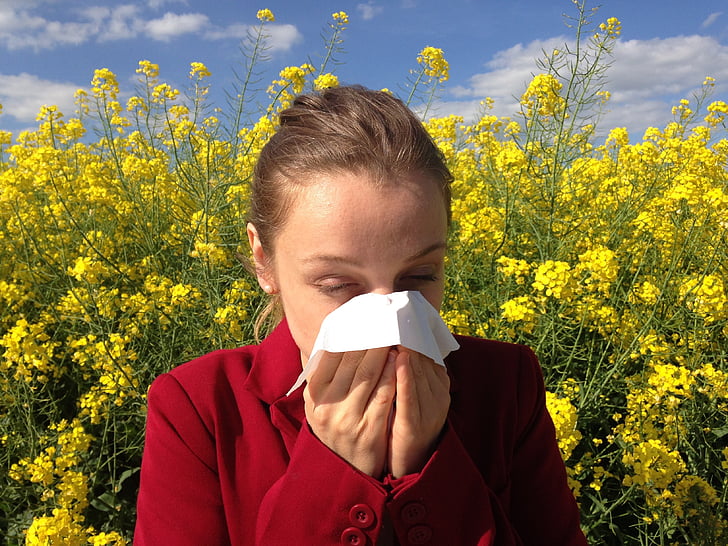Spring is a new awakening. The weather is pleasant, and nature is beautiful. However, many people experience runny noses, puffy eyes, coughing, and itchiness, making spring a dreaded time. Whether it be seasonal allergies as described above, food allergies, or other factors, it is agreed that the symptoms are particularly annoying, impacting a person’s quality of life and mood. But how exactly do they work? Why do some people have no allergies at all?
Allergies occur when the immune system reacts to an unfamiliar substance. Our bodies “make antibodies that identify a particular allergen as harmful, even though it isn’t,” the Mayo Clinic reported. When the body comes into contact with these allergens, the immune system identifies it as an invader and reacts, causing unwanted effects. The intensity of an allergic reaction largely depends on the person, which can range from a small disturbance to a severe emergency that is life-threatening. That said, it is important to exercise great caution to protect yourself and others.
The most common food allergies fall into the “Big Nine.” This group includes milk, eggs, peanuts, soy, wheat, tree nuts, shellfish, fish, and sesame. Take peanuts, for example. “Proteins in the peanut bind to specific IgE antibodies,” FARE (Food Allergy Research and Education) stated, which leads “to reaction symptoms that can be mild or very severe.” IgE stands for Immunoglobulin E, which are antibodies associated with allergies. Food allergies tend to cause shortness of breath, itching in the throat, swelling, and coughing.
Seasonal allergies are also common, more commonly called hay fever or allergic rhinitis. There are multiple triggers for seasonal allergies. “The most common allergens are pollens from wind-pollinated plants, such as trees, grasses, and weeds,” Healthline said. During the spring, birch, cedar, alder, willow, and poplar trees cause most of the allergies due to the pollen from the tree. In summer, most allergies come from ryegrass and select weeds. During fall, ragweeds cause many unwanted allergy symptoms, as their “pollen usually reaches peak levels in mid-September,” ACAAI (American College of Allergy, Asthma and Immunology) reported.
Another category of allergies is caused by indoor allergens, which can linger year-round. The most common indoor allergens include dust mites, cockroaches, and mold. Dust mites are hard to notice but are quite irritating. “Dust mites are tiny arthropods that can only be seen with a microscope,” Verywell Health stated. They thrive in humid environments and can be found near furniture, bed sheets, and plush toys. On the other hand, cockroaches cause allergic reactions because they “contain proteins that some people are allergic to.” Additionally, mold, which grows through spores, spreads through airborne particles that can be inhaled. According to the Mayo Clinic, mold can be linked to asthma and restrict breathing in extreme cases.
Although there are no cure for allergies, there are treatments to reduce its symptoms or prevent them altogether. The most obvious prevention method is to avoid the allergen, if possible. For example, having windows closed, good ventilation, and air filters can reduce common indoor and pollen allergies. For seasonal allergies, if exposure is unavoidable, using natural remedies and over-the-counter medication can help. Keeping a food diary will help narrow down which foods cause allergic reactions, as suggested by the Mayo Clinic. If you find that cutting a specific product out of your diet improves your symptoms, look for specific trends and try to supplement that item with other food groups.
In the end, some people may have no allergies, while others may have many. Allergies are based on many different factors, such as the environment, genetics, and the condition of the immune system. The so-called “seven-year cycle rule” is a myth, which claims that allergies change in a cycle-like fashion. Allergies can develop or disappear at any age because a person’s body constantly changes. Therefore, as of now, it is best to stay informed about allergies and consult a professional if necessary.













































































































































